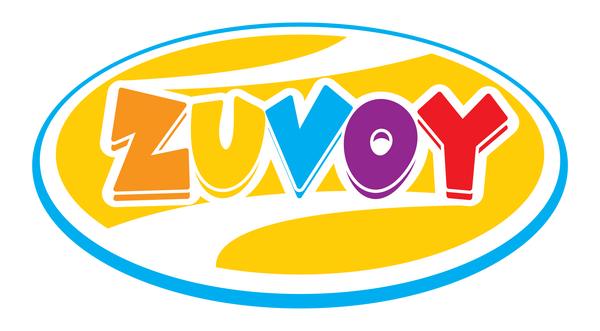Collection: Color Learning
-
Step & Stack – Shape Sorting & Stacking Toy
No reviewsRegular price Rs. 1,350.00Sale price Rs. 1,350.00 Regular price Rs. 1,350.00Unit price / per -
Sort & Learn – Shape Sorting & Stacking Toy
No reviewsRegular price Rs. 750.00Sale price Rs. 750.00 Regular price Rs. 750.00Unit price / per -
Shape World – Wooden Shape Puzzle
No reviewsRegular price Rs. 750.00Sale price Rs. 750.00 Regular price Rs. 750.00Unit price / per -
Domino Dash - Wooden Domino Set
No reviewsRegular price Rs. 1,200.00Sale price Rs. 1,200.00 Regular price Rs. 1,200.00Unit price / per -
Color Match Fun – Color Matching & Sorting Peg Toy
No reviewsRegular price Rs. 750.00Sale price Rs. 750.00 Regular price Rs. 750.00Unit price / per -
Bloom Match – Flower Construction Game
No reviewsRegular price Rs. 1,200.00Sale price Rs. 1,200.00 Regular price Rs. 1,200.00Unit price / per
frequently asked questions
What are the best color learning toys for toddlers?
The best color learning toys for toddlers include wooden stacking rings, color sorting boards, rainbow puzzles, and Montessori color-matching sets. These toys make learning colors fun and interactive through hands-on play.
How do color toys help in early childhood development?
Color recognition toys support visual discrimination, language development, and cognitive growth. They help toddlers learn to identify, sort, and name colors, strengthening both observation and communication skills.
At what age should kids start playing with color toys?
You can introduce color learning toys as early as 12 months. Toddlers begin noticing color contrasts, and by age 2-3, they start recognizing and naming colors with the help of wooden educational toys.
Are wooden color toys safe for babies and toddlers?
Yes! Wooden color toys are safe when crafted from non-toxic, BPA-free paint and eco-friendly wood. They're durable, splinter-free, and perfect for Montessori-based color learning at home or preschool.
Can color sorting toys improve fine motor skills?
Absolutely! Activities like color matching, peg stacking, and ring sorting improve hand-eye coordination, grasping techniques, and fine motor development in toddlers and preschoolers.
How do I teach colors using wooden toys?
Use interactive color toys like rainbow stackers and sorting boards to point out each color, repeat their names, and encourage matching. Turn color learning into a game by asking kids to find or group the same color.
Are Montessori color toys effective for learning?
Yes. Montessori-inspired color toys encourage self-correction, independent learning, and tactile exploration, allowing children to develop a deeper understanding of color identification and visual grouping.
What skills do color toys teach besides color recognition?
In addition to learning colors, these toys teach counting, sorting, sequencing, memory building, and critical thinking. They also help with language development when paired with descriptive interaction.
Can color learning toys support bilingual development?
Definitely. Use color toys to introduce color names in multiple languages (like English and Hindi). Repeating colors in both languages improves vocabulary, language association, and bilingual confidence.
Where can I buy quality color learning wooden toys online?
Look for options that are Montessori-based, eco-friendly, and designed for toddlers and preschoolers.
You may also like
-
Family
-
Floaty Feels | Game of Emotional & Intelligence
No reviewsRegular price Rs. 745.00Sale price Rs. 745.00 Regular priceUnit price / perSold out -
Gratitude Quest | Game of Thankfulness & Joy
No reviewsRegular price Rs. 599.00Sale price Rs. 599.00 Regular priceUnit price / perSold out -
Mango De-Stress | Game of Emotional Regulation & Relaxation Adventure
No reviewsRegular price Rs. 745.00Sale price Rs. 745.00 Regular priceUnit price / perSold out -
Mindset Magic | Game of Strategy & Manifestation
No reviewsRegular price Rs. 760.00Sale price Rs. 760.00 Regular priceUnit price / perSold out
Interactive Color Learning Toys for Toddlers
Help your child explore the magical world of colors through interactive wooden color toys. Designed for toddlers and preschoolers, these color recognition toys spark curiosity while building fine motor skills, visual memory, and early sorting abilities. Each toy is thoughtfully crafted to make screen-free color learning fun, tactile, and educational.
Montessori-Inspired Color Sorting Games
Encourage hands-on discovery with our Montessori wooden color sorting toys that nurture cognitive development and hand-eye coordination. From stackers to peg puzzles, these toys help toddlers grasp the concept of colors while engaging in meaningful self-learning and play. Perfect for playrooms, classrooms, or travel kits.
Boost Brain Development with Color Matching Toys
Our color matching wooden toys offer a playful way to build early problem-solving and classification skills. Children match hues, stack rings, and sort colored objects to develop a keen eye for detail. These toys are a perfect blend of learning and fun, tailored for toddlers aged 1–4 years.
Color Learning That Connects with Early Literacy
Colors are one of the first concepts toddlers understand. Our color learning wooden toys are designed to not only teach shades but also introduce early language development by pairing color names with shapes or objects. These tools promote verbal skills while staying aligned with Montessori principles.
Popular Searches
wooden color learning toys | Montessori color toys for toddlers | color recognition toys India | wooden sorting toys | rainbow stacker toy | educational toys for 2 year olds | learn colors for preschoolers | wooden color matching puzzle | color learning toys for babies | Montessori educational toys |

















